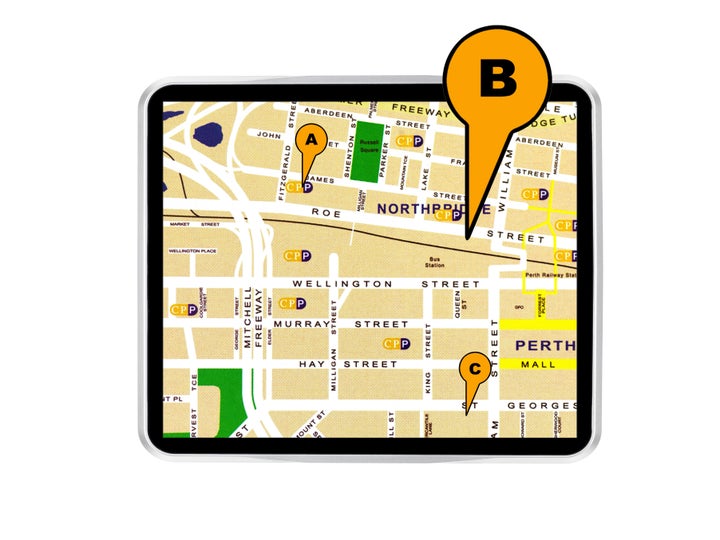
It's the time of year where the days seem to stretch forever, and children have to be coaxed inside for bed after hours of playing outside. Or maybe that's what evenings used to be. Over the decades, with parents who worry that children aren't safe out of sight, and children preferring the four walls of whatever room holds the xBox to the expanse of the great outdoors, the nights when grimy kids came in for baths as darkness fell are mostly memory.
They are also on a map. The nostalgia of the season has led Frank Jacobs, the "Strange Map" collector over at BigThink.com, to revisit one drawn several summers ago by The Daily Mail. In a memorable article about four generations of the Thomas family in Sheffield, England, and how their world had changed, writer David Derbyshire raised concerns that won't be new to any parents. The oldest generation walked everywhere and was independent in ways that the youngest generation, who is driven everywhere, can not imagine.
It is one thing to "know" this, and quite another to see it on the map. The Daily Mail took an aerial photo of Sheffield, where George Thomas lived as a child, and where his son, daughter, and great-grandson also grew up. Four overlays were placed on the map, each representing how far from home the generations were allowed to roam.
You can see the annotated map here. It is a visual of a shrinking world. When George was eight, back in 1919, he was allowed to walk six miles from his house to go fishing at a small pond. When George's his son, Jack, was eight, in 1950, the radius had already been shortened to one mile, but that circle allowed him freedom to roam the local woods. By 1979, when Jack's daughter Vicky was eight, she was permitted to walk to the local swimming hole, which was half a mile away. And five years ago, when Vicky's son Ed was eight, he could not wander further than the end of his street, a distance of 300 yards.
Of course the Thomas family isn't the only one whose boundaries have contracted. Jacobs cites a study called One False Move: A Study of Children's Independent Mobility by the Policy Studies Institute in London, which measured what Jacobs calls "the gradual shrinkage of children's habitat," leading to "the effective end of the outdoor childhood." Between 1970 and 1990 that "habitat" was reduced to one-ninth of its original size. In 1970, for instance, 80% of British kids of this age took themselves off to school in the morning, but by 1990 only 10 percent did.
The reasons are many, and circular. The world is more dangerous, or seems so, which means parents need to keep their children close, which means that there aren't children wandering the neighborhood, which means even if yours wanted to, there'd be no one out there to play with, so they might as well stay home.
You can debate all you want whether the original fears are misguided, and whether we are hurting our children by trying to protect them this way. But there is no debate about the impact when you see it laid out in black and white and green.
It makes you feel claustrophobic.
It makes you want to take a walk.
What was your "wandering range" as a child? What is your child's now? Does this give you second thoughts?